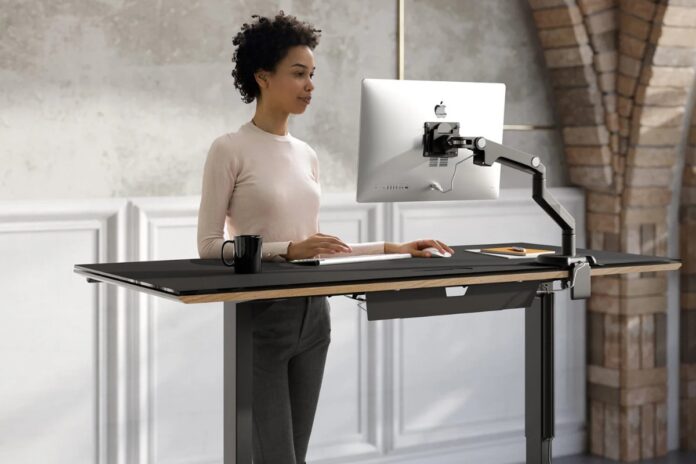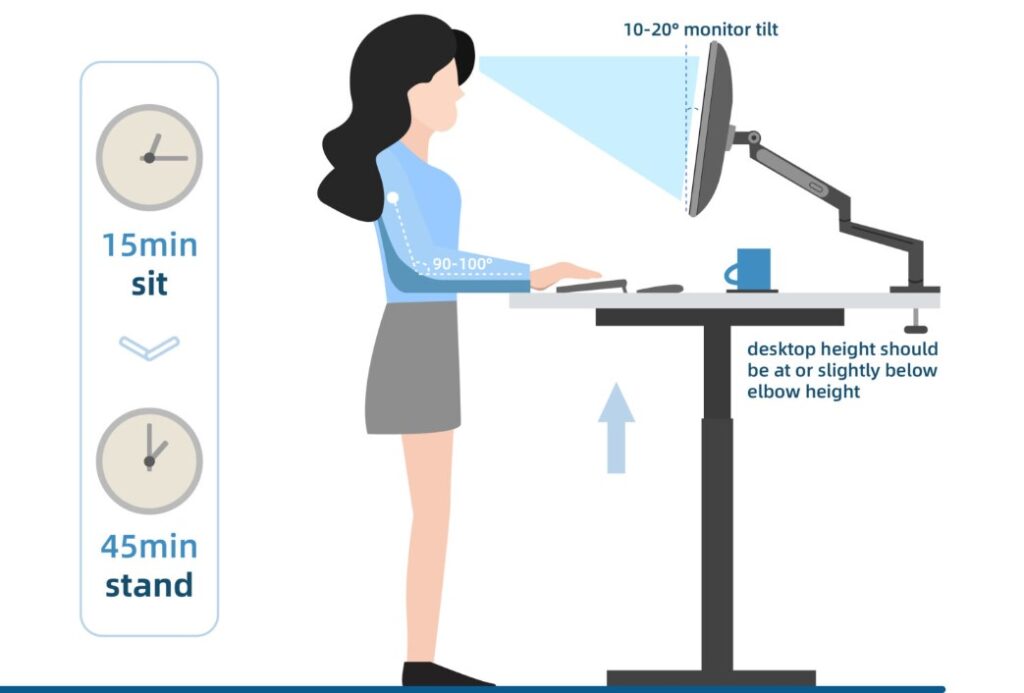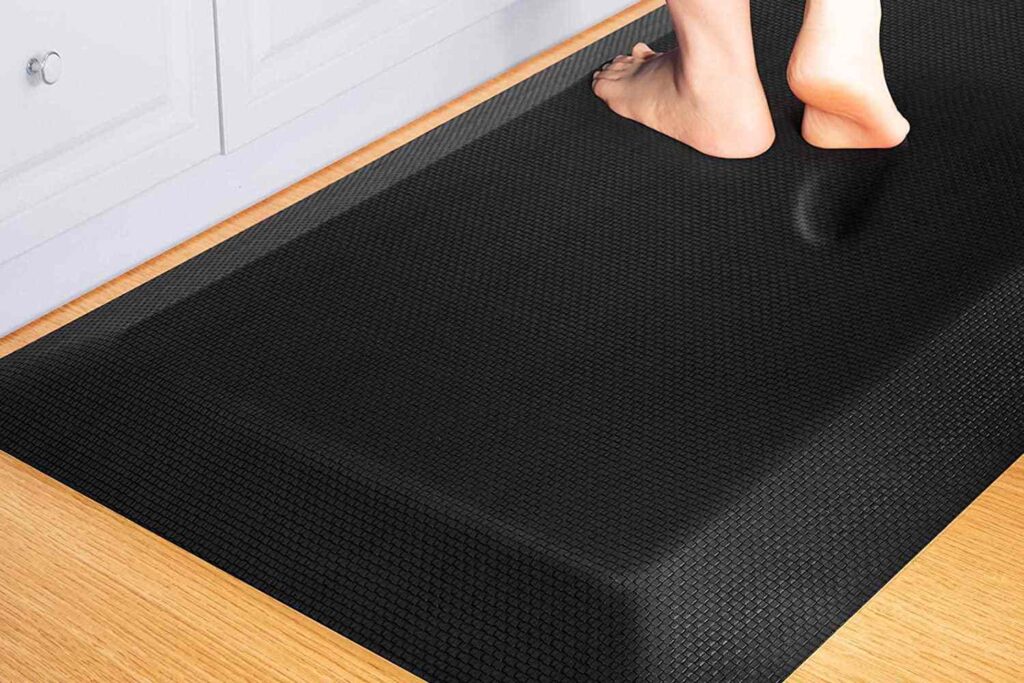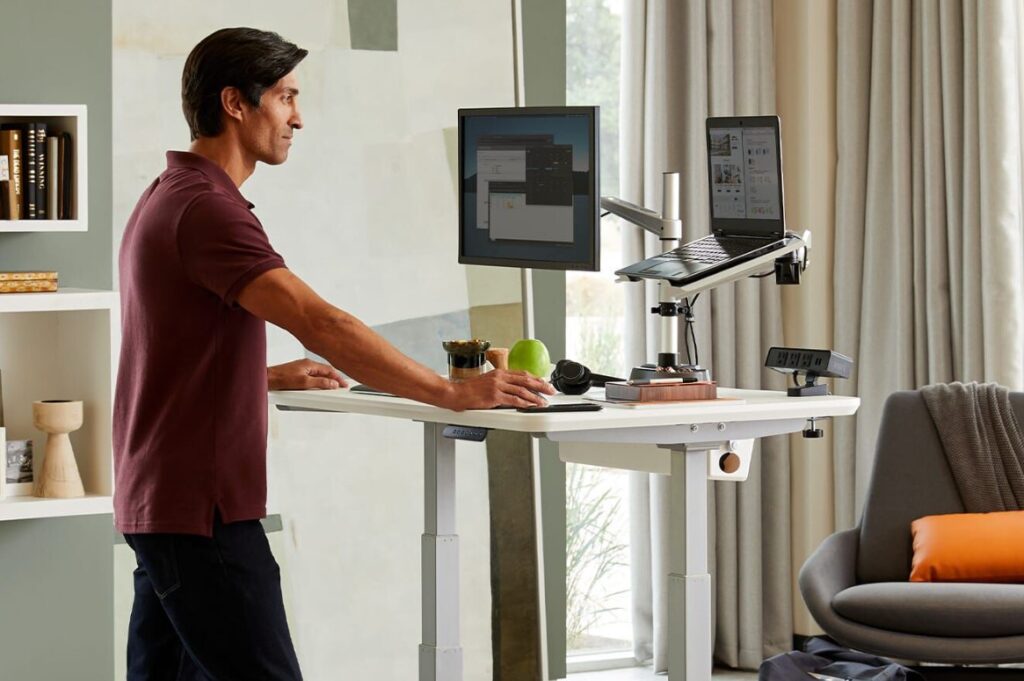
If you’ve decided to make the switch to a standing desk, congratulations on taking a step toward a healthier work environment!
Standing desks can help reduce the negative effects of prolonged sitting, such as back pain and poor posture.
However, to fully reap the benefits of a standing desk, it’s crucial to find the right height.
In this article, we’ll explore the ideal standing desk height and provide you with ten tips for ensuring it’s just right for you.
Table of Contents
1. Measure Your Elbow Height
Start by measuring the height of your elbows when they’re bent at a 90-degree angle. Your standing desk should be at this height to allow for comfortable typing and mouse usage. This ensures that your wrists are in a neutral position, reducing strain.
2. Consider Your Monitor Height

Your computer monitor should be at eye level. This means that when you’re looking straight ahead, your eyes should meet the center of the screen.
This helps prevent neck strain and encourages good posture.
3. Stand Barefoot
When measuring the desk height, stand barefoot or wear the shoes you typically wear while working. This ensures that your measurements are accurate and that you’ll be comfortable during extended periods of standing.
4. Check Your Posture
Stand in your natural, relaxed posture while measuring the desk height. Avoid slouching or leaning forward as this can lead to discomfort and musculoskeletal issues over time.
5. Test Different Heights
Don’t be afraid to experiment with different desk heights. What works for one person may not work for another. Try different heights and see which one feels the most comfortable for you.
6. Use an Adjustable Desk
Investing in an adjustable desk allows you to switch between sitting and standing, enabling you to fine-tune the desk’s height to your comfort and work more ergonomically.
7. Anti-Fatigue Mat

An anti-fatigue mat is a valuable addition to your setup. It provides cushioning for your feet, reducing fatigue and promoting comfort during extended periods of standing.
8. Monitor Arm
If your desk doesn’t allow for easy monitor adjustment, consider using a monitor arm. This accessory allows you to move your monitor to the perfect height and angle.
9. Ergonomic Accessories
Ergonomic accessories, such as a keyboard tray and an adjustable chair, enhance your standing desk’s comfort and promote proper posture, ensuring a more ergonomic and health-conscious workspace.
10. Listen to Your Body
Ultimately, the right desk height is one that makes you feel comfortable and minimizes discomfort. Pay attention to any signs of discomfort or strain, and adjust your desk accordingly.
Conclusion

In conclusion, finding the right height for your standing desk is crucial for your comfort and overall well-being.
By considering your body’s natural posture, measuring carefully, and being open to adjustments, you can create a workspace that promotes good health and productivity.
Remember, there’s no one-size-fits-all answer when it comes to desk height, so take the time to find what works best for you.







